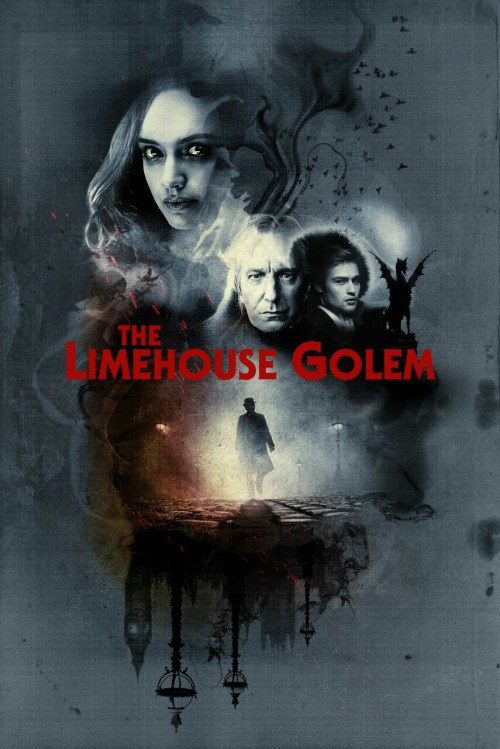On Murder Considered as one of the Fine Arts:
THE LIMEHOUSE GOLEM
An exclusive interview with director Juan Carlos Medina
Interview copyright © Damian Michael Barcroft 2017
~~~
‘September 6, 1880: It was a fine bright morning, and I could feel a murder coming on…’
– Chapter Seven, Dan Leno & The Limehouse Golem by Peter Ackroyd
~
DAMIAN: I’d like to begin by talking about your previous feature, Painless (aka Insensibles) which I came across while researching for this interview and found to be both extremely shocking but also profoundly moving in its visceral symbolism. For those who haven’t seen it, and I highly recommend that they do, the premise concerns a group of children who are locked in an asylum and hidden away from society because of a rare congenital condition which prevents them from feeling any pain. Now, moviegoers have become so desensitized -a possible analogy there?- that it can be difficult for filmmakers to come up with new ways to shock their audience but the images you create of children in straitjackets and mouth-guards setting each other on fire and biting chunks of flesh out of themselves are genuinely creepy and original in their power to disturb. In addition to directing the picture, you also co-wrote the screenplay so how on earth did you come up with the idea for the story?
JUAN: It was a mixture of themes that fascinated me. I’ve had a very religious education in Spain in the eighties, went to a school run by nuns for years. It was very disciplinarian. Today I’m really agnostic but I have kept a keen interest in matters of religion. So when I was in university I studied Buddhism and the first question of Siddhartha is why is there pain? – it’s a bit like the equivalent of the Catholic fundamental question why is there evil? I wanted to tell a story about the relationship between the ability to feel pain and humanity. But I wanted to keep the story purely visceral, find a purely bodily incarnation of this theme. I’m a huge fan of Cronenberg too so I wanted to tell this story with bodies, not with words.
I also wanted to talk about the lost memory of those troubled years in Spain, my own family has a very bloody history that traces back to The Civil War. So when I heard about Nishida’s syndrome, the syndrome of congenital insensitivity to pain, that was it. It was the perfect metaphor.
 DAMIAN: And, as I’ve said, in addition to the horror elements, it really does work on a heartbreaking emotional level, particularly with reference to the extraordinary performances from the young actors. Can you tell me a little bit about working with the children and their casting and audition process?
DAMIAN: And, as I’ve said, in addition to the horror elements, it really does work on a heartbreaking emotional level, particularly with reference to the extraordinary performances from the young actors. Can you tell me a little bit about working with the children and their casting and audition process?
JUAN: To work with small children is a very difficult and time consuming process. First you have to find the right ones. We had a great casting director in Barcelona Pep Armengol, and he sent his teams to screen tons of schools, literally thousands of children. Once you find the right ones you have to develop a relationship of trust with them and their parents. Do lots of rehearsal until they lose their inhibitions and start to enjoy themselves as if it was a game. You have to keep it very playful and fun. I also had a fantastic child coach who had worked in Bayona’s The Orphanage. She did a fantastic job helping me with the kids.
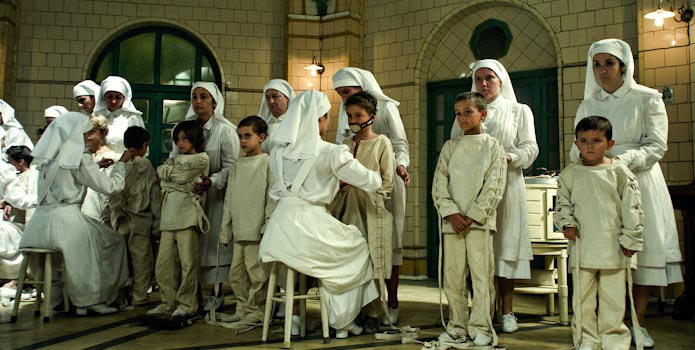 DAMIAN: The location work for the fortress-like asylum was stunning. Where were the exterior and interior shots actually filmed?
DAMIAN: The location work for the fortress-like asylum was stunning. Where were the exterior and interior shots actually filmed?
JUAN: The exterior is a Napoleonic era fort in the Pyrenees that we CGI-extended, the interior is totally built in a set in Barcelona. So the place was a total creation.
I wanted something high in the mountains and carceral. Old psychiatric wards used to be more like prisons really. They didn’t know how to treat people so they locked them up.
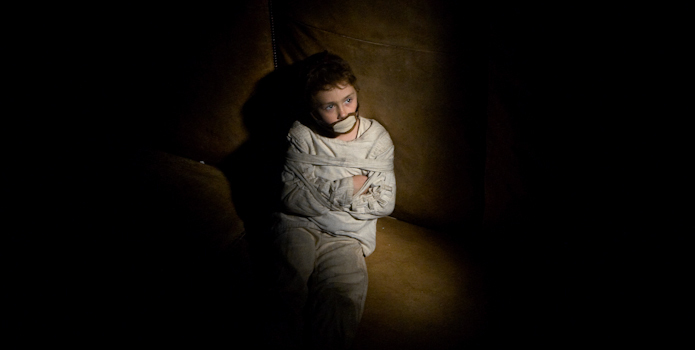 DAMIAN: As with Peter Ackroyd’s novel, Dan Leno and the Limehouse Golem, Painless struck me as a story which very much comments on the society and the attitudes of its period setting. Your film alludes not only to the Spanish Civil War, General Franco and fascist armies obliterating their political opponents, but also perhaps “child-stealing” and state-enforced adoption. Are these themes and issues something that still continue to haunt the Spanish consciousness?
DAMIAN: As with Peter Ackroyd’s novel, Dan Leno and the Limehouse Golem, Painless struck me as a story which very much comments on the society and the attitudes of its period setting. Your film alludes not only to the Spanish Civil War, General Franco and fascist armies obliterating their political opponents, but also perhaps “child-stealing” and state-enforced adoption. Are these themes and issues something that still continue to haunt the Spanish consciousness?
JUAN: Yes very much so. Cruelly so I would say. There’s a branch of psychoanalysis called psycho-genealogy and it pretends to explain people’s ailments by tracing them back to unresolved questions in the story of their past relatives. It’s the same with families, and ultimately, countries. What’s unresolved keeps festering inside and haunting the future. Unlike Germany in Spain, the bad guys won The Civil War, which was one of the cruelest the world has ever known. There was never an atonement, there were never consequences for the criminals. The modern Spanish state has been built on a pact of silence, a slab of oblivion has been thrown over these questions. A few years ago the career of world famous judge Baltasar Garzon was ended because a fascist (should we say alt-right?) group Manos Limpias attacked him in the tribunal for putting into question the law of amnesty that does not allow families of relatives executed in mass graves by the dictatorship to recover the bones of their relatives. A few days ago Rajoy quoted Lorca in a speech (about the Barcelona attacks) and people were screaming “sacalo de la cuneta primero!!” (get him out of the ditch where your predecessors shot him first!!). My great grandmother was a close collaborator of The Pasionaria, the head of the Spanish communist party during the thirties. When Franco’s troops invaded Badajoz, they were led by the General Yague, one of Franco’s most savage generals. They butchered half the population of Badajoz. My grandmother told me the story of how the soldiers came to their house and they took my great grandma, and her husband, who was a “guardia de asalto”, (a police officer from the republic) The soldiers were kids… not even twenty. My great grandma was slapping them in the face: “your mother would be ashamed of you” – they took them and executed them like dogs. My grandmother was seven. She went through the city with her sister, looking for her dead parents under the bodies of thousands shot in the streets. The streets of Badajoz were bathed in blood, literally. Franco used colonial troops because they had no attachment to Spanish population. Those soldiers had been trained massacring Moroccan villages during the Rif Wars for years. They didn’t give a shit about killing women and children. And so they did. She’s described those scenes to me with photographic accuracy. It’s worse than anything people want to bother to remember today. So Painless in a sense is a movie I made to exorcise those stories.
DAMIAN: And perhaps both Painless and The Limehouse Golem could be described as Gothic melodramas. Like the central character (in Golem) Elizabeth Cree alleges of her husband, might you as a director also have something of a morbid disposition?
JUAN: Morbid I don’t know… I’m a romantic… So probably yes a bit morbid.
DAMIAN: Do you consider yourself to be a director of horror films?
JUAN: I love horror films, but I don’t like to be prisoner of a genre. I think genres are there to play with them, not to be cornered by fanatic people who will judge if you were faithful to the articles of faith or whatever. I read that Tobe Hooper passed away. I knew him a few years ago, had dinner with him, such a great guy. A great human being. I think he was a true romantic too, like Gaspar Noe or people who are attracted to the dark side of humanity are often. Tobe played with genres… The Texas Chainsaw Massacre is perhaps the scariest horror film of all time, but what is it indeed: it’s almost a documentary about the very real horror at the heart of America’s degenerescence. That’s why it’s so scary.
DAMIAN: I’m wondering what directors have inspired your work and if there is a particular Spanish or World Cinema influence in your visual aesthetics?
JUAN: Definitely British cinema in the sixties, seventies and eighties is a big influence. Hitchcock, Michael Powell, Joseph Losey, Ridley Scott, Nicholas Roeg, John Boorman, Ken Russell, Neil Jordan.
I love the romantic excess, the aesthetic power of British cinema through the ages, the unrestrained generosity, the risk taking, the focus on substance and the indifference to hype, the raw power that comes from a great combination of a cerebral eye for the beauty of the world and a profound current of dramatic romanticism in that cinema that I trace to Shakespeare. I think I grew up with those films and they were the films that made me want to make films.
DAMIAN: I don’t know if you read Ackroyd’s novel or Jane Goldman’s adapted screenplay first but what was your initial reaction to The Limehouse Golem?
JUAN: I was a fan of Peter Ackroyd and had read that novel and many others. So for me to get a script by Jane Goldman of that book and produced by Stephen Woolley, the legendary producer of Neil Jordan it was like a dream. It seemed it would be an easy film to finance but it was damn hard! Took three years.
DAMIAN: For those who might be unfamiliar with the book, can you say a little bit about the story and what kind genre you think it belongs to? – I mean, did you approach the material as Gothic melodrama, a Victorian horror/thriller or simply a whodunnit murder mystery?
JUAN: It was a bit of all that I think. More importantly it’s the story of the creation of a monster, and a nightmarish vision of London though his eyes. I’ve always been fascinated by that theme. They journey from innocence to monstrosity. That’s a common theme with Painless.
The book is a journal, basically a chronicle of the life in the slums of London at that time told by the Golem himself. It’s a profoundly timeless, sarcastic but poignant commentary about the human condition, from the perspective of a creature that sees through the masks, because of its position in society, feel that it’s OK to show the worst.
DAMIAN: If my might offer my own brief analysis of Ackroyd’s very multi-textured and complex book, there’s a certain intertextual quality about it in which both the real and (in the theatre scenes) dramatised, combine to form a symmetrical and yet contrasting narrative which serves to highlight the psychological and pathological fissure between reality and illusion. On the one hand, the book adheres to Ackroyd’s propensity for combining fact with fiction (in addition to music hall comedian Dan Leno, novelist George Gissing and philosopher/political revolutionist Karl Marx are just some of the famous faces who appear within the pages for example) within a historical (often London) setting but additionally, as I’ve suggested, it also seems to read as a thesis on the nature of acting, costume and disguise while manipulating the reader’s perception of performance, testimony and evidence in its juxtaposition of identities and how they are presented to society in life, theatre and the courtroom. With all this in mind, and given that the story unfolds through various narrative devices including courtroom trial transcripts, autobiography and diary entries, how have you managed to incorporate all this into the film and to what extent have some of these labyrinthian themes and issues had to be sacrificed in order to tell a more linear and cinematic story?
JUAN: It’s a movie about Masks, and the murder mystery is structured into a figure of the Labyrinth. The Labyrinth of London is a metaphor for the Labyrinth in the Golem’s mind. The two mirror each other, so the theme of the mirror is very important in how I staged the movie. The police investigation is more an investigation into several personas of the street or of the stage, than a search for clues into the physical world. “London is an emblem of all that is darkest, and most extreme, within existence itself. Is it the heart of the empire, or the heart of darkness ?”. That’s a quote from Peter Ackroyd in his book about London. Also, the “real story and the story that is seen in the theatre become intertwined and generate each other, like two mirrors facing each other and creating an infinity of reflections. It’s a theme about how we create our history, our identity, in which the visions, the fantasies, the stories we make up about ourselves, and the stories that actually happen, become one, until we can’t tell what was first. Is the story of Romeo and Juliet real or was it a fiction? It was a Babylonian story (Pyramus and Thysbe) before being a Shakespeare tragedy, but more importantly it’s an eternal story of love subverting the social order. Stories like that are eternal archetypes. Were they real or fiction? It doesn’t matter anymore. This was present in all the work we did with Jane Goldman on the script, and was fundamental in how I approached building the narrative style and aesthetic of the film.
 DAMIAN: I’m also wondering what significant changes you have had to make to some of the characters and I’m thinking with particular reference to Inspector Kildare. I think it’s fair to say that of all the characters in the book, his is possibly the least well defined and doesn’t actually occupy many pages at all. For example, it isn’t until chapter forty-five and about twenty pages before the end of the book that we learn that he is in a same-sex relationship but the fact that he is gay is almost a blink and you’ll miss it moment. Since Bill Nighy plays the part of Kildare, have you fleshed out the character and is his sexuality explored in more detail?
DAMIAN: I’m also wondering what significant changes you have had to make to some of the characters and I’m thinking with particular reference to Inspector Kildare. I think it’s fair to say that of all the characters in the book, his is possibly the least well defined and doesn’t actually occupy many pages at all. For example, it isn’t until chapter forty-five and about twenty pages before the end of the book that we learn that he is in a same-sex relationship but the fact that he is gay is almost a blink and you’ll miss it moment. Since Bill Nighy plays the part of Kildare, have you fleshed out the character and is his sexuality explored in more detail?
JUAN: Fleshing out Kildare’s character and structuring a police procedural was a natural consequence of making this book, which is almost a chronicle, into a film… but as many things that seem obvious, it took the genius of Jane Goldman to actually make it happen in a way that is powerful, original, and at the same time faithful to the essence of the book.
 DAMIAN: We can’t discuss the character of Kildare without mentioning the much-missed Alan Rickman who was first cast in the part before he became ill. I’m not sure if he actually shot any scenes but did you get to meet the great man?
DAMIAN: We can’t discuss the character of Kildare without mentioning the much-missed Alan Rickman who was first cast in the part before he became ill. I’m not sure if he actually shot any scenes but did you get to meet the great man?
JUAN: I met Alan for the first time in January 2015. I was totally starstruck. There he was, the legend, walking in front of me and talking with his incredible voice. He was so tall , I couldn’t believe it! I was so intimidated I could barely speak. He immediately abolished all the barriers between us, he was so kind and so generous. Such a noble soul. He told me he had watched Painless and that he loved the film, that he had been really impressed by it, and that I was the best possible director to make The Limehouse Golem. He said that in front of Stephen Woolley, my producer, who had been working for ten years on the project before I got involved. That was really a kind thing to do. He didn’t have to. I have never felt so proud and happy in my entire life. Then me and Jane Goldman frequented him for months, we went to his house, talked about the role, did work to best fit the role to him. We became friends. It was an unbelievable horror to learn about his illness. The first day I landed in London and went to Stephen’s office to start preproduction, in August 2015, Stephen called me in and told me. I burst into tears. It was one of the most horrible things I’ve ever had to endure in my life. It’s really hard to talk about it.
DAMIAN: What can you tell me about the character and casting of Olivia Cooke as Elizabeth Cree?
JUAN: It was hard to cast Lizzie Cree. We had to find a girl who was quite young, like twenty or twenty-one, because the character goes from sixteen/seventeen to twenty-five in the film and I wanted to use the same actress for that. So to find an actress that could have the range to pull off a character like that, was a nightmare. You have to find an old soul. Someone who has that in them. So it took a long time. I discovered Olivia’s work in The Quiet Ones, and Me Earl and the Dying Girl and was blown away. I thought she had something of Christina Ricci, Lilian Gish.. a timeless womanly beauty and maturity in her acting that only the greatest actresses have. She is absolute star material and I am so proud of her work in The Limehouse Golem.
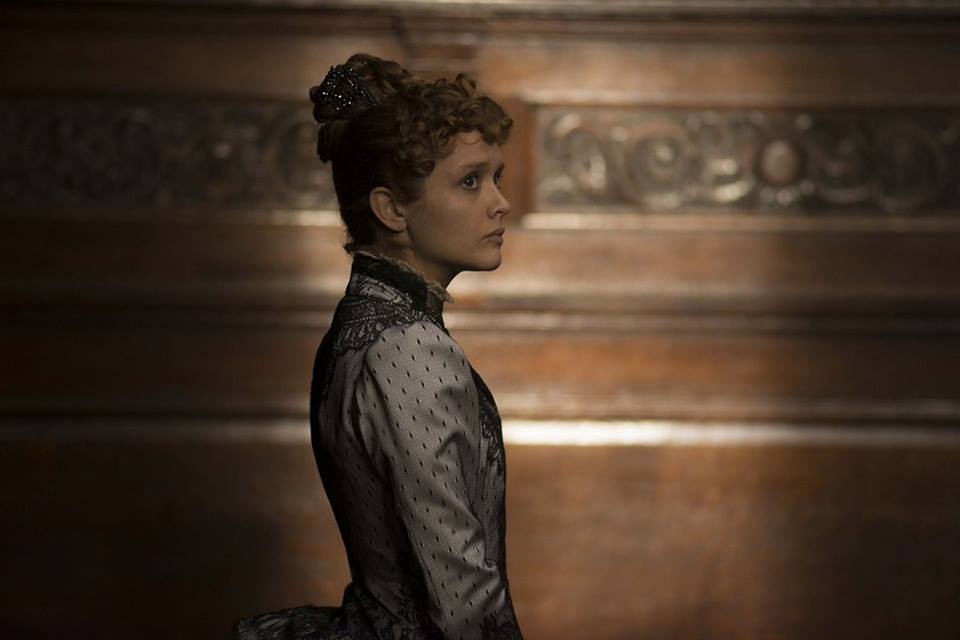 DAMIAN: Some critics reviewed the book and hailed it as a feminist story. However, under the circumstances of which we’d better not elaborate, I personally find it difficult to agree that she is a good feminist role model. What are your thoughts on this?
DAMIAN: Some critics reviewed the book and hailed it as a feminist story. However, under the circumstances of which we’d better not elaborate, I personally find it difficult to agree that she is a good feminist role model. What are your thoughts on this?
JUAN: She is not a feminist role model at all. But she is a symbol of the oppression of women. A little bit like Jeanne Moreau’s character in Diary of a Chambermaid by Bunuel. Because she is a woman of low social status, she sees the vileness of this man’s world without the pleasant masks, without the stories that we tell ourselves to make it alright. It’s OK for all these men to show her their true nature. She won’t speak. Lizzie sees beyond the masks, and her creation is a furious creation of horror and blood, but also a profoundly cathartic act. It’s the fury of Medea against the injustice of men, against their vileness. Few societies in world history were more patriarchal than Victorian society. In its values, in its aspirations, it was a profoundly masculine time. But that masculinity was ill, terminally ill, like masculinity is always ill when it tries to thrive by abolishing women. And that diseased masculinity would end up in the mass graveyards and trenches of WW 1 and WW2.
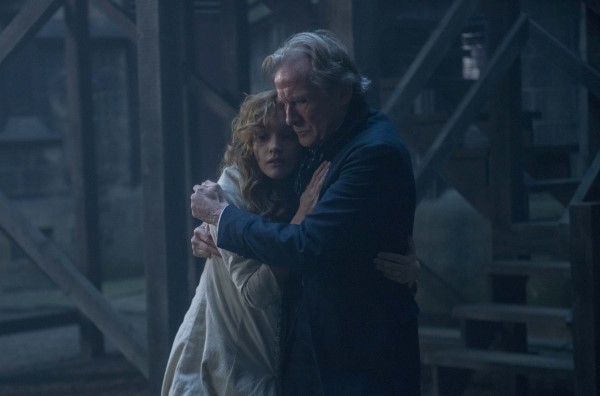 DAMIAN: You also have an impressive supporting cast but I want to ask you about Damien Thomas who plays Salomon Weil because I was mesmerized as a child by his extraordinary performance as Count Karnstein in the Hammer Horror classic, Twins of Evil. Does he have that same menacing gravitas in person?
DAMIAN: You also have an impressive supporting cast but I want to ask you about Damien Thomas who plays Salomon Weil because I was mesmerized as a child by his extraordinary performance as Count Karnstein in the Hammer Horror classic, Twins of Evil. Does he have that same menacing gravitas in person?
JUAN: No, Damien is very kind and was very cool and patient with us while we were shooting this scene in the stables of an empty manor in the Yorkshire moors… it was freezing cold! It’s one of my favourite scenes in the film. He was great! I love Hammer films, especially Quatermass and the Pit, The Hound of the Baskervilles with Peter Cushing.
DAMIAN: You’ve already mentioned the great Stephen Woolley, responsible for many a classic film including some of my Gothic favourites The Company of Wolves and Interview with the Vampire, who produced this movie. What was he actually like to work with?
JUAN: Stephen is great. A master film producer like they don’t make them anymore. I call him a Sensei, that’s what he is. It’s been such a privilege to work with him. I have learned a lot from him. He’s also very generous with his life stories and the stories about the making of so much of his great films he did in collaboration with Neil Jordan. You could listen to him for hours telling these stories. Those films were really important for me when I was a kid/ teenager, in the years where I was deciding to go into filmmaking: Interview with a Vampire, The Crying Game, Michael Collins. It was so incredible to make my second film with him. He’s also a great producer to have on set, he’s been a director himself so he knows. He elegantly stays behind and immediately steps in to back you up and help when things get off course. He’s incredibly smart and a true cinephile that can talk about movies for hours. I asked him when he was going to publish his memoirs. I can tell you that’s going to be an important book in the history of Cinema. He replied that day he will burn so many bridges he won’t be able to produce movies anymore. So I hope we won’t see that book for a long time, and that Stephen can keep producing great films for many years.
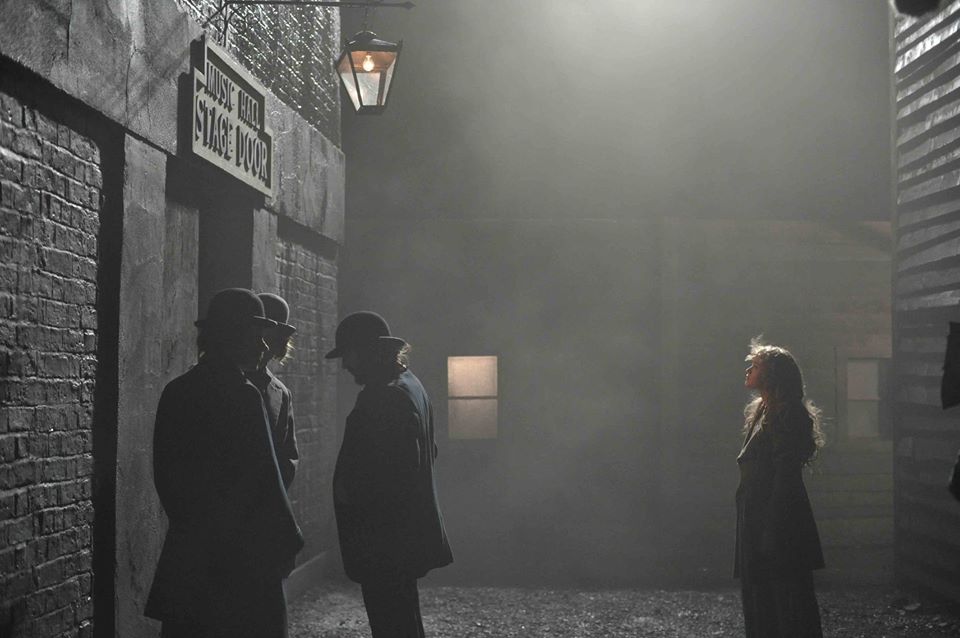 DAMIAN: There’s certainly no shortage of macabre tales set in pea-soup foggy Victorian London and I think it’s fair to say that although the story is set some years before, it kind of anticipates the world of Sherlock Holmes and Jack the Ripper which we are all so familiar with. How, as a director, do you find new and fresh ways to reimagine this world for audiences?
DAMIAN: There’s certainly no shortage of macabre tales set in pea-soup foggy Victorian London and I think it’s fair to say that although the story is set some years before, it kind of anticipates the world of Sherlock Holmes and Jack the Ripper which we are all so familiar with. How, as a director, do you find new and fresh ways to reimagine this world for audiences?
‘A biblical city ready for the fire of heaven.’ – Paul Verlaine
‘It is a biblical sight, something to do with Babylon, some prophecy out of the Apocalypse being fulfilled before your very eyes. Baal reigns and does not even demand obedience, because he is certain of it.’ – Dostoevsky
‘An enormous Babel… and the flood of human effort rolls out of it and into it with a violence that appalls one’s very sense.’ – Carlyle
JUAN: Those three quotes are references in Peter Ackroyd’s book, London: A Biography. They were essential to how I approached the creation of that world, as I wanted to place the audience in the mind of the Golem, seeing the world through his eyes.
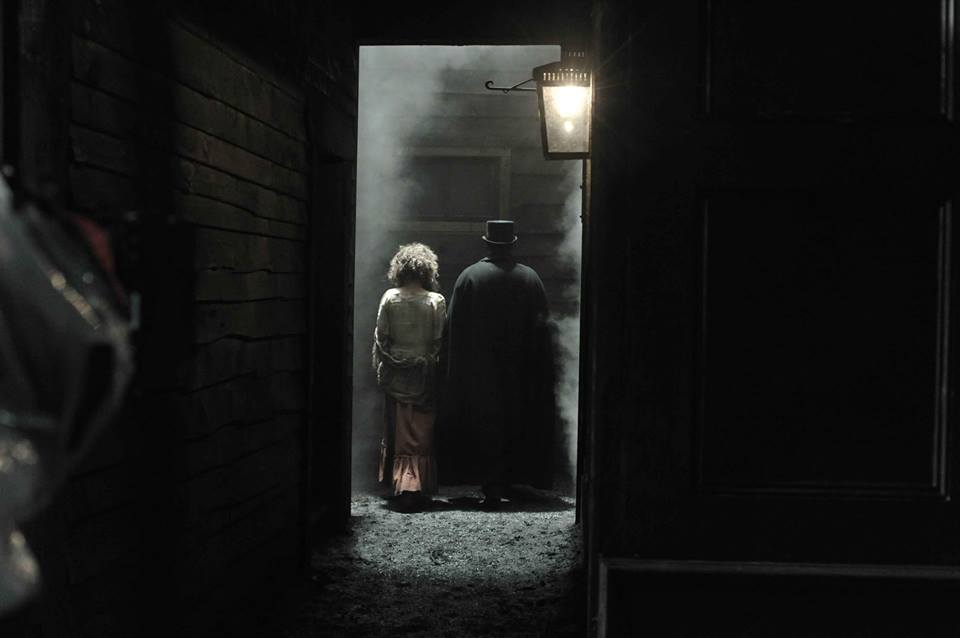 DAMIAN: The film certainly looks amazing from the footage that I’ve seen. Can you tell me about some of the discussions regarding your vision of Victorian London and the direction you gave to the cinematographer, Simon Dennis, who I know from my Ripper Street interviews?
DAMIAN: The film certainly looks amazing from the footage that I’ve seen. Can you tell me about some of the discussions regarding your vision of Victorian London and the direction you gave to the cinematographer, Simon Dennis, who I know from my Ripper Street interviews?
JUAN: In coherence with my answer to the last question, I based the world of The Limehouse Golem more on a nightmarish subjective vision of London, the paintings of Grimshaw, Blake, John Martin, the engravings of Gustave Dore and Piranesi were our guide to create this visual world. These were the visual references I discussed with Simon Dennis, and my production designer, Grant Montgomery. In truth we wanted to stay away from a “photographic realism” of London and more into a subjective vision tainted by nightmare.
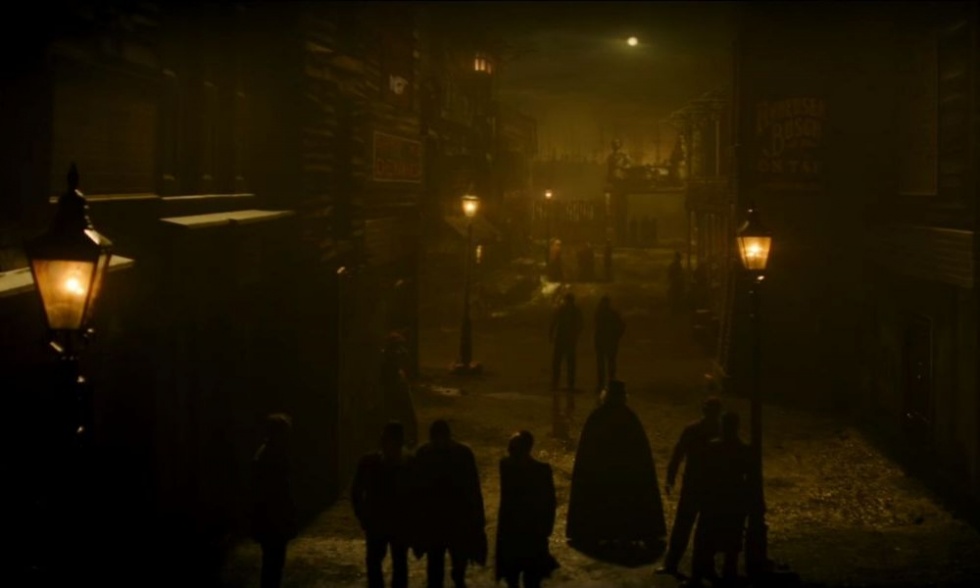 DAMIAN: The Limehouse Golem reunites you with the composer of Painless, Johan Söderqvist, was working on your first feature together the beginning of a beautiful Tim Burton/Danny Elfman kind of friendship?
DAMIAN: The Limehouse Golem reunites you with the composer of Painless, Johan Söderqvist, was working on your first feature together the beginning of a beautiful Tim Burton/Danny Elfman kind of friendship?
JUAN: I think so! Johan and I have become friends, and we don’t need to talk much, we just enjoy working together! He’s my favourite film composer in the world!
 DAMIAN: As was the case with the aforementioned Jack the Ripper murders, Ackroyd also frames the hunt for the serial killer or Limehouse Golem within the pages of the Illustrated Police News effectively, and again similar to the theatre and courtroom scenes, transforming the crimes into sensationalist melodramas and addressing the public’s fascination with horrific and grisly crimes. Both the press and public of bourgeois society are fascinated by a good murder trial in arguably a similar fashion to which they like to consume theatre, and indeed cinema, so what do you think such appetites say about the people reading this interview or wanting to see your film?
DAMIAN: As was the case with the aforementioned Jack the Ripper murders, Ackroyd also frames the hunt for the serial killer or Limehouse Golem within the pages of the Illustrated Police News effectively, and again similar to the theatre and courtroom scenes, transforming the crimes into sensationalist melodramas and addressing the public’s fascination with horrific and grisly crimes. Both the press and public of bourgeois society are fascinated by a good murder trial in arguably a similar fashion to which they like to consume theatre, and indeed cinema, so what do you think such appetites say about the people reading this interview or wanting to see your film?
JUAN: It’s the same question over and over again. Should we enjoy the spectacle of violence? I think it’s a misguided question. Theatre has always been bloody, from its inception on the theatres of ancient Greece… And when the press was born, in the 18th and 19th century, press was almost exclusively tabloid, interested in crimes and blood and gossip. You don’t protect people by censoring and pretending the world is Disneyland. I think the violence of drama is the same violence we find in dreams. It’s largely symbolic. It’s a representation. Even if we censor movies, books and what not to the death, because political correctness wins in the end, we will never be able to censor the violence in our experience of life, and that violence will find an expression in our dreams. I’m so sick about that eternal debate. Sadly, as incredible as it may seem, there are lots of people -sometimes quite smart- who ignore or feign to ignore the difference between what’s represented and the representer. So basically if you put a Nazi in a movie, even clearly in a horribly negative role that leaves no doubt as to your position on Nazis, you will be called a Nazi because there’s a guy with a Nazi uniform in your film.
DAMIAN: Juan, thank you very much indeed.
JUAN: Thank you for your brilliant and pertinent questions! It was a pleasure.
~~~
All the interviews and articles on this website are original and exclusive and I would ask that the copyright be respected. Therefore, please do not use quotes or any other information contained here without permission. Thank you.
~
THE LIMEHOUSE GOLEM IS IN CINEMAS NOW



